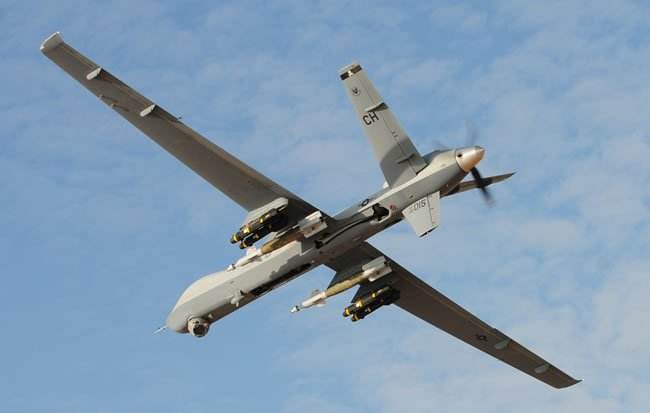Both CH-5 and Wing Loong II are Chinese-made drones. These two products are aimed at foreign trade exports and are in a competitive relationship.

Wing Loong II 
CH-5
There are many similarities between these two drones. First of all, they are the aerodynamic layout of the unmanned aerial vehicle. The maximum takeoff weight and the amount of ammunition are also very close. However, in some performance data and internal devices, you can see the difference between the two.
The maximum take-off weight of Wing Loong II is 4.2 tons, the load capacity is 480 kg, the maximum lift exceeds 10,000 meters, the maximum flight speed reaches 370 kilometers, and the battery life can reach 20 hours. CH-5 has a maximum take-off weight of more than 3 tons, a load capacity of up to 1 ton, a maximum ceiling of 9 kilometers, a maximum flight speed of 180 to 220 kilometers per hour, and a battery life of up to 40 hours. Through these parameters, we can find that the CH-5 is better than the Wing Loong-II, but the Wing Loong-II is equipped with a domestic turboprop 9A engine, and the CH-5 is equipped with a domestic aviation heavy oil engine.
It is generally believed that the performance of turboprop engines is better than that of heavy oil engines. The former has a maximum output of 600 horsepower and the latter has 300 horsepower. Moreover, due to the turbo workmanship of the turboprop engine, the thrust is large, and the applicable space environment is wide, so many high-altitude or heavy aircraft use it. After all, the heavy fuel engine is a piston engine. Although the fuel is special, it has low thermal efficiency and is only suitable for some aircraft with a low flight speed or low altitude and light takeoff weight.
From the choice of aero engine, we can see that the two drones have a different emphasis. Wing Loong II focuses on flight speed and altitude, while CH-5 focuses on economy and battery life. In short, each has its own advantages, and they are all good Chinese-made drones.